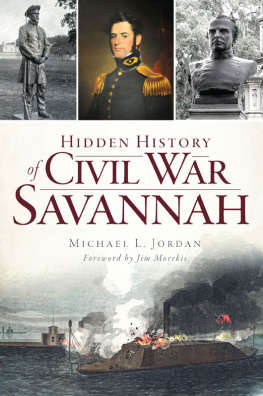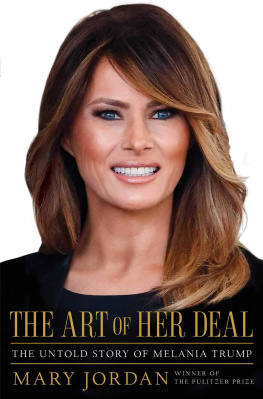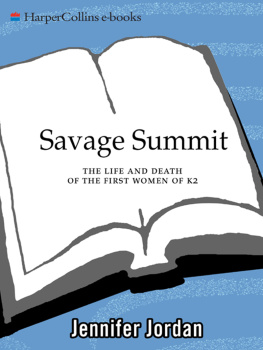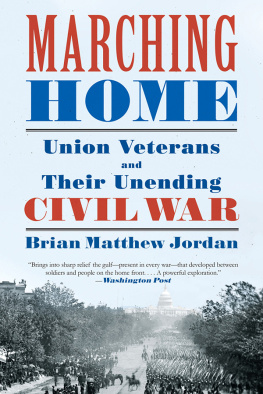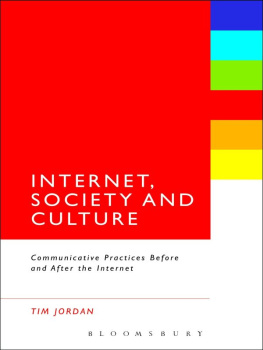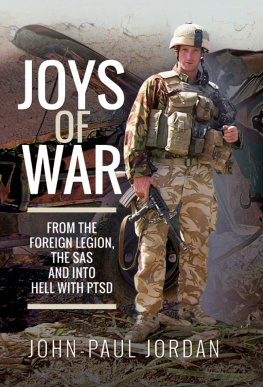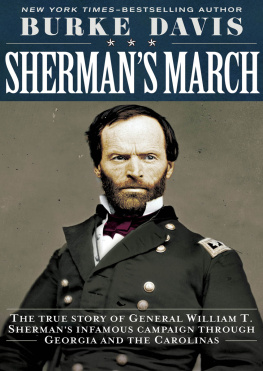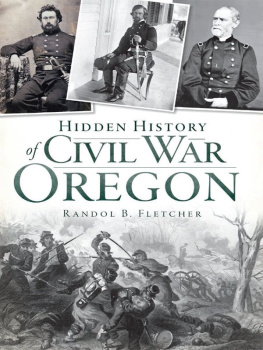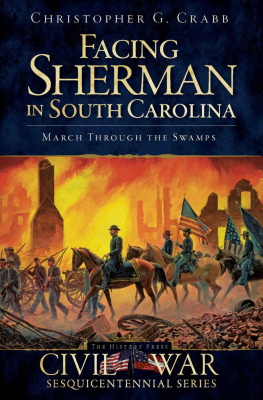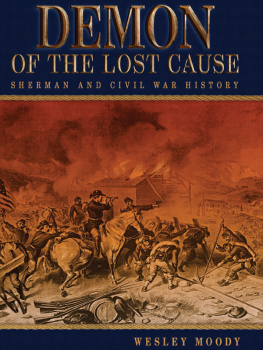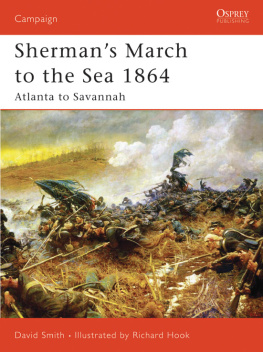

Published by The History Press
Charleston, SC
www.historypress.net
Copyright 2017 by Michael L. Jordan
All rights reserved
Front cover, top left: Library of Congress; top center: bequest of Robert E. Lee , III, Washington and Lee University, Lexington, Virginia; top right: authors collection; bottom: estate of Judy L. Wood.
First published 2017
e-book edition 2017
ISBN 978.1.62585.180.2
Library of Congress Control Number: 2016961744
print edition ISBN 978.1.62619.643.8
Notice: The information in this book is true and complete to the best of our knowledge. It is offered without guarantee on the part of the author or The History Press. The author and The History Press disclaim all liability in connection with the use of this book.
All rights reserved. No part of this book may be reproduced or transmitted in any form whatsoever without prior written permission from the publisher except in the case of brief quotations embodied in critical articles and reviews.
To my parents, Marjorie and Morris
CONTENTS
FOREWORD
It seems that no matter what else might change in America, our collective fascination with the Civil War remains unbroken.
Whether because the country still wrestles with so many of its ancillary issues today, or because of its stirring and very human tales of courage, or because of the way Americans reconciled after our bloodiest conflictor because of all threethe events of 186165 resonate with us a century and a half after the wars end.
While Savannah, Georgia, is very much in touch with its colonial and Revolutionary War past, the Civil War left its mark here as wellnot in fire and ember, as in Atlanta or in Columbia, South Carolina, but in affirming Savannahs identity as a bit more individualistic, a bit truer to itself, a bit off the beaten path, even for Southern cities.
Michael Jordans new book, Hidden History of Civil War Savannah, delivers more than the promise of its title. In my years of familiarity with his passion for history and dedication to scholarship, Ive also learned that Michael has one of the rarest of scholarly gifts: he communicates that passion for history with skill, humor, confidence and real accessibility.
Whether in his written projects or in his many fine independent video productionswhich have set the regional standardMichael has always reached for more than the mundane.
Even a glance at the chapter titles of Hidden History shows that this is no regurgitation of things you already know. Youll find tales of soldierly bravery, for sure. But youll also read about the largely forgotten, controversial Corner-stone Speech, delivered in Savannah by Alexander Stephens, which made stark the Souths morally indefensible reason for secession.
Youll also read lesser-known facts about very well-known people, such as the young Robert E. Lee. As a U.S. Army officer, he helped build the same Fort Pulaski that would be one of the Unions earliest prizes of war when it was recaptured from its Confederate garrison.
Savannah has its share of tour guides. Im chagrined to say that some of them are, shall we say, occasionally tempted to embellish the truth a bit.
Like myself, Michael has a journalism background. He knows the value of accuracy, of authenticity, of first-person experience. Hidden History of Civil War Savannah exemplifies all three.
Ive written several travel guidebooks, and as I write them, I always keep Michaels example in mind: take care of the truth, and the fun will follow.
The old line goes that truth is stranger than fiction. As any journalist, historian and history buff knows, however, truth is also usually much more interesting than fiction.
Theres no need to embellish a history as grand and intriguing as Savannahs, anyway.
JIM MOREKIS
Author and editor-in-chief of Connect Savannah magazine
ACKNOWLEDGEMENTS
The genesis of this book was a January 2013 conversation with eminent Savannah educator and historian Dr. Paul M. Pressly, who convinced me that I had the knowledge and skill to write in depth about Savannahs history. Hugh Golson, descendant of so many noteworthy Savannahians of long ago and keeper of countless stories, read virtually everything I wrote and offered insight at every turn. Hugh also shared his extensive and ever-growing personal collection of period images of Savannah. The incomparable Dr. Maurice Mel Melton, author of The Best Station of Them All: The Savannah Squadron, 18611865, kept me straightened out during my feeble attempt to dabble in his waters of Civil War naval history when I wrote about the ill-fated CSS Atlanta. Lieutenant Colonel Henry W. Persons Jr. and National Park Service historian Jim Burgess of Manassas National Battlefield Park were immeasurably helpful as I wrote about Francis S. Bartow and the Oglethorpe Light Infantry at the Battle of First Manassas.
Mazie Bowen, public service coordinator at the University of Georgias Special Collections Library, was always available with a quick scan of a source document or an image. The archivists at the Georgia Historical Societys Research Center, the Louis Round Wilson Special Collections Library at the University of North Carolina at Chapel Hill and the David M. Rubenstein Rare Book & Manuscript Library at Duke University were instrumental as well. The folks at Washington & Lee University bent over backward to help me obtain a portrait of young U.S. Army lieutenant Robert E. Lee in time to meet my deadline. Luciana Spracher, director of the City of Savannah Research Library and Municipal Archives, was as much a partner in this project as she has been in so many of my historical documentaries over the years.
Jeff Seymour, director of education and history at the National Civil War Naval Museum in Columbus, Georgia, was tremendously helpful with access to typescripts of period diaries. Reference librarian Sharen Lee at the Bull Street Library in Savannah continued her tradition of going out of her way to help me find what I needed. Kelly Westfield, a graduate student in public history at my alma mater, Armstrong State University in Savannah, rendered invaluable service locating and copying historic newspaper articles and primary sources at libraries and archives in Savannah.
Mick McCay ran around downtown Savannah in the aftermath of Hurricane Matthew to get me the correct punctuation for the text on the Confederate Monument. Fenton Martin and Dr. Christopher Hendricks helped me clean up and correctly organize more than four hundred endnotes and my bibliography.
My mother-in-law, Margarete Neate, worked as a full-time child-care provider for a month to enable me to write the first few chapters of this work. My wife (and published author), Dr. Krista Wiegand, graciously shouldered many of my usual tasks and responsibilities so that I could devote the time and energy required to finish the book. She offered wise counsel, endured my long-winded stories and tempered my perfectionism. I could ask for no greater partner or friend. Finally, this project has spanned more than half the life of my son Joseph, who has found his own unique and endearing ways to support his daddys book.
Introduction
SAVANNAH
More than Just a City That Sherman Didnt Burn
Walk down one of Savannahs tree-shaded downtown streets on any given day and youre likely to hear the voice of a tour guide wafting on the breeze behind a passing trolley or echoing off the thick trunks of the live oak trees and the brick walls of the historic houses. General William T. Shermans March to the Sea ended here in Savannah in December 1864. The guide will inform his or her guestscorrectlythat Savannah mayor Richard Arnold and a small group of aldermen rode out to meet Shermans advancing army outside the city limits in order to surrender the defenseless city, that Sherman lodged in the stately Green-Meldrim House on Madison Square and proceeded, in a telegram, to present Savannah to President Abraham Lincoln as a Christmas gift, complete with thousands of bales of cotton.
Next page
